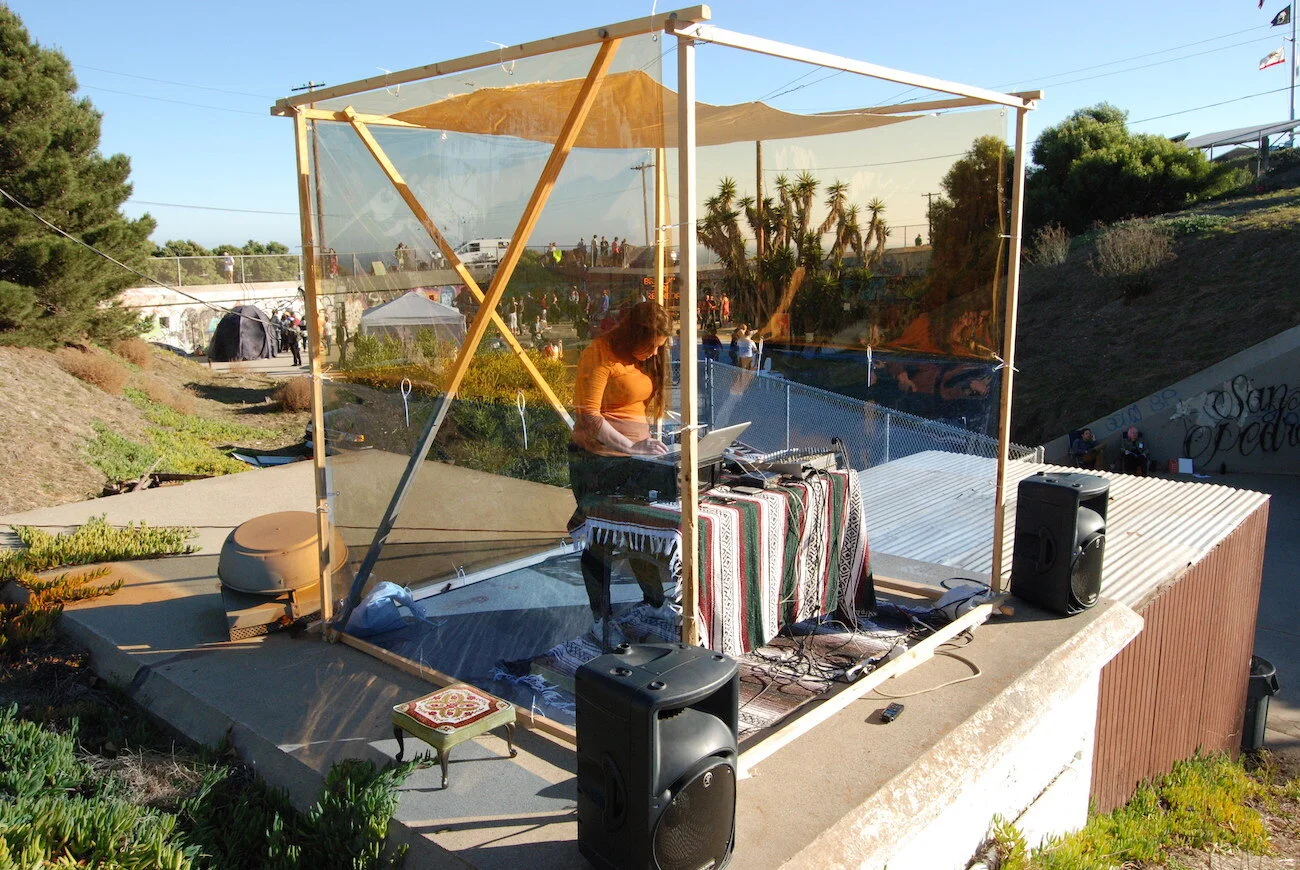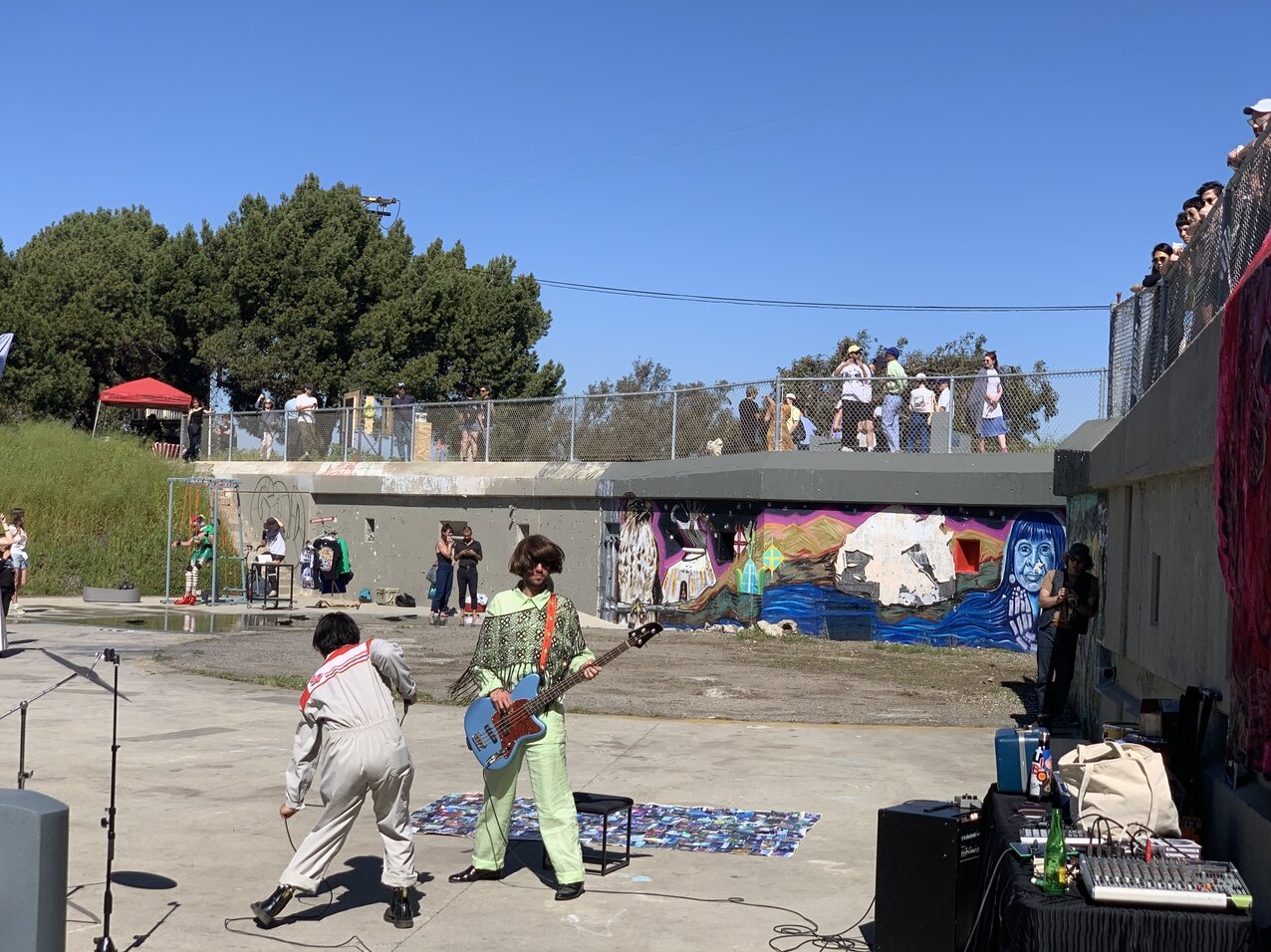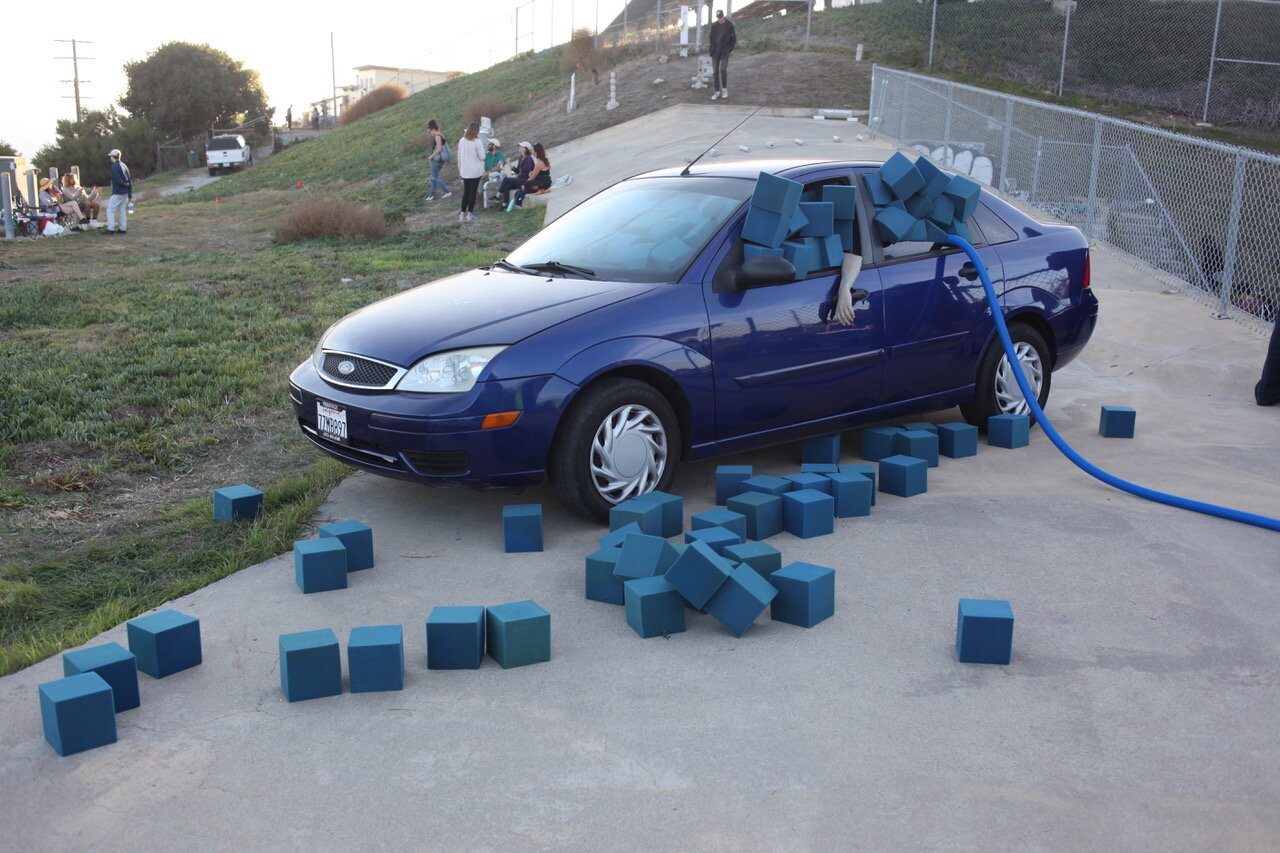BODYWORKBODYWORK at OPaf 2018 at Battery Leary-Merriam in San Pedro. February, 2018. Photo courtesy of OPaf.
Every year, I receive a press pass to Art Los Angeles Contemporary—a local art fair known as ALAC—and because I can never pass up a free ticket, I attend the opening. I am always curious to see what the scene is like in this hyped up, pop-up showroom which brings a wide swath of the art world together, who are as much on display as the art. It is great for people watching.
Fairs can be great opportunities for rubbing elbows, but it can be difficult to escape the pervasiveness of positioning and transactional relationships. Selling is the number one priority and definitely impacts how people interact.
I recently had a conversation with an artist who expressed a similar sentiment regarding art fairs.
“Art fairs are the worst,” K Knittel told me, half jokingly. Knittel is speaking from experience. Having both worked at art fairs and participated in them as an exhibiting artist, Knittel described being really turned off by the cost, the stress, the tension, and choices being made for the wrong reasons. At the forefront of every gallery’s mind is, “How do we make our money back?”
Knittel is an artist whose practice has included experimental, non-commercial project spaces, such as a flagpole gallery in a yard in San Pedro, a gallery in a cubby, and an arts coverage blog where anyone can post images of exhibitions. Unused, forgotten spaces and accessibility are Knittel’s bread and butter.
Through our conversation, it was apparent to me that Knittel’s projects often come into existence to balance out particular aspects of the art world, such as highly selective arts coverage or the art fair model, with alternatives. One idea that started out tongue-in-cheek, but ultimately became a thriving reality, was the Other Places art fair.
The idea had been percolating for a while when the catalyst to get it going happened in 2016. Knittel attended an event at Human Resources that was like speed dating for project spaces where everyone got a few minutes to introduce their project. Knittel realized it was actually possible to get all these people that are usually spread across greater LA in the same place.
It was the push needed to start OPaf, an art fair for all the other places that don’t fit into the traditional white cube commercial spaces at Capital-A capital-F Art Fairs.
OPaf 2018 at Battery Leary-Merriam in San Pedro. February, 2018. Photo courtesy of OPaf.
During OPaf, exhibitors selected through an open application process are spread out across a somewhat unruly Battery Leary-Merriam at Angels Gate Cultural Center in San Pedro. Before being decommissioned, the battery had been used for various military and defense purposes. During the fair, exhibits, performances and activities exist on gun platforms, in bunker entrances, under trees and on grassy hillsides overlooking the Pacific Ocean out toward Catalina Island.
OPaf has essentially removed the money factor and returned the focus to the work, with exhibitors still selling work or merchandise, but usually for incredibly accessible prices. I purchased a piece from Maiden LA’s booth in 2018, its $20 price point was irresistable. Knittel has also worked to keep the booth fees low and by the second year was able to make it pay for itself, which has allowed it to be self-sustaining.
“Anyone who has participated in it has truly wanted to do it—that feeds into the feeling that it’s existing for everybody,” said Knittel.
Monte Vista Projects at OPaf at Battery Leary-Merriam in San Pedro. March 2019. Photo courtesy of OPaf.
Art fairs have become a huge part of the art world’s ecosystem even though the participants are primarily involved in the commercial sector. The fairs seem to be discussed in terms of being a necessary evil: In a recent report on the Art Market, art dealers reported that they made 46% of their sales at art fairs in 2017. In order to stay afloat, it’s easy to see why galleries feel the need to participate in the ever growing number of fairs around the globe.
Afshin Dehkordi in the Guardian asks whether art fairs are good or bad for artists, and the consensus seems to be that along with the galleries, artists are pressured to make sales which means selling their work becomes their primary objective.
It makes Knittel’s desire for an opposing force to balance out the black hole of the Art Fair circuit seem imperative. The numbers also reflect the interest from the local art community. The first OPaf in 2018 had 24 exhibitors, which increased to 41 in 2019.
Like most artists with ambitious projects, OPaf is described as a labor of love by Knittel. It is not yet a profitable venture, but has been successful in connecting the artists it is meant to serve.
“Ultimately the benefits are the network that has formed around it,” Knittel said.
Knittel added that while OPaf started out of personal interest and the desire to connect with likeminded artists and projects, it has always been primarily about serving artists and people experimenting with what an art space is, while connecting these spaces to the broader public. Two years in, OPaf has received positive attention from high profile publications, including Hyperallergic and ArtForum.
I would argue OPaf is a model that others can use to develop new systems within the art world. Knittel shared with me one realization that came about through organizing OPaf: “Organic and positive networking can exist! Hope in humanity!”
This was no small feat for one artist.
Work by Nina Sarnelle, “Nike X and My Dead Hand” at OPaf at Battery Leary-Merriam in San Pedro, March 2019. Courtesy OPaf.




